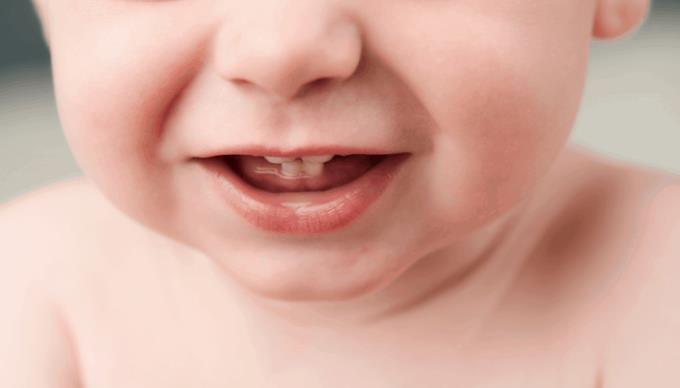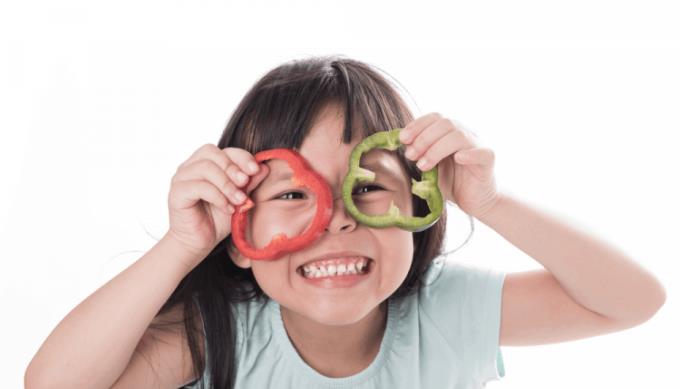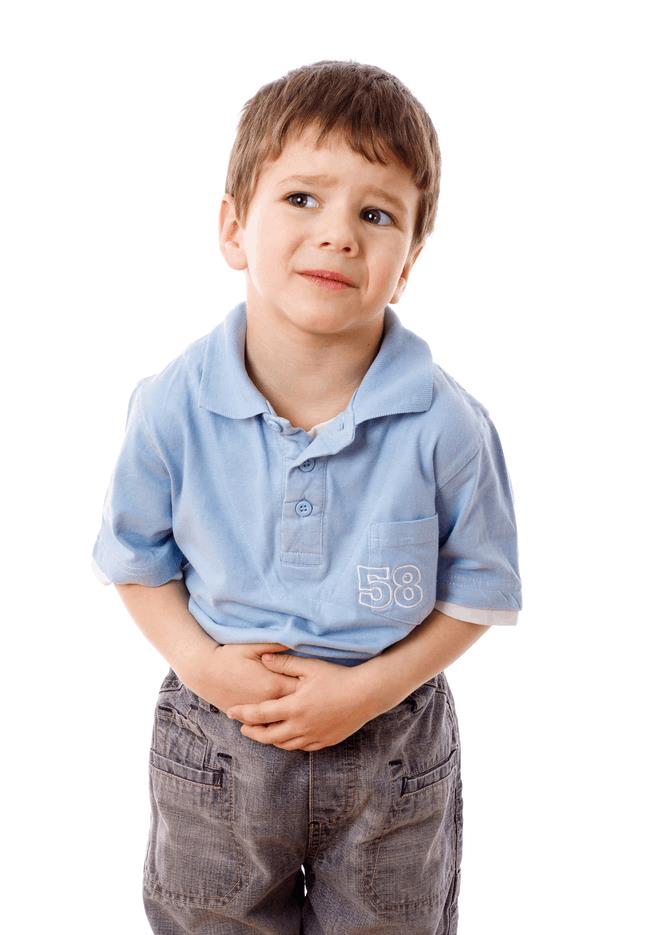Ways to determine an infants caloric needs

Learn how to determine your baby’s caloric needs, including the calories in breast milk and formula, to ensure your infant gets the right nutrition for healthy growth.
Fever symptoms are very common in children. The fever is usually not harmful and even a good indicator that the body is actively fighting against the invasion of the pathogen.
But when the child wakes up in the middle of the night, the skin is red, the person is hot and sweaty, you cannot help but worry and be confused about what to do. aFamilyToday Health will provide you with information you need to know about common childhood fever symptoms, including note about the need to bring your child to the hospital to see a doctor.
Fever occurs when the body's internal "thermostat" raises the body's temperature above normal. This thermostat is found in a part of the brain called the hypothalamus. The hypothalamus knows what temperature your body should be (usually around 37 ° C) and sends a message to your body to stay that way.
Most people's body temperature changes during the day: slightly lower in the morning and slightly higher in the evening. Body temperature can also change when children run, play and exercise.
However, sometimes the hypothalamus "re-sets" to get higher body temperature in response to infection, disease or some other cause. Why is that? Researchers believe that hyperthermia is the body's way of turning itself into an uncomfortable environment for the bacteria that cause infections. It can be seen as a form of self-protection of the body.
It is important to remember that fever by itself is not an illness, usually a sign or symptom of another problem.
There are several possible causes of a fever:
Infection: Most fevers are caused by infections or other illnesses. Fever helps the body fight off infections by stimulating natural defense mechanisms.
Being incubated too carefully: Children, babies are not able to regulate their body temperature like older children. If the environment is too hot or incubated too well, the child may have a fever. But even if you incubate babies and children too carefully with towels, with many layers of clothes and children with fever symptoms, do not be subjective. It is important to take your child to the doctor for checkup because fever can also be an outward manifestation of a serious infection.
Immunizations: Babies and young children sometimes get a low fever after getting vaccinated.
Teething : Although teething can cause a slight increase in body temperature, that probably shouldn't be the cause if the child's temperature rises above 37.8 ° C.

You may be interested in: "Fever of unknown origin: Symptoms, diagnosis and treatment"
In healthy children, not all fevers need to be treated. However, a high fever can irritate your child and make problems (such as dehydration) worse.
The doctor decides whether to reduce the fever by considering both the child's temperature and general condition.
If your child has a temperature lower than 38.9 ° C, medication is usually not needed unless the child is uncomfortable and uncomfortable. However, there is one exception: If an infant 3 months of age or younger has a rectal temperature (rectally measured) of 38 ° C or higher, seek emergency medical attention. Just a mild fever can be a sign of a serious infection in a young child.
If your baby is 3 months to 3 years old and has a fever of 39 ° C or higher, call your doctor to find out if you need to take your baby to the doctor. For older children, pay attention to their behavior and motor frequency to see if their behavior changes and gestures are due to a trivial disease or if the child has a more serious problem and need to see a doctor. doctor.
Still enjoy playing
Eat well
Be alert, alert and smile at you
Normal skin color
Looks good when the baby's temperature drops
Don't be too alarmed when a child has a fever and doesn't want to eat. This is very common with fever caused by an infection. If the child is still drinking and urinating normally, as long as he or she doesn't eat as much as usual is fine.
A light kiss on the forehead or a hand lightly on the skin is usually enough to give you an indication that your child has a fever. However, this method of taking this temperature (called the tactile temperature) will not give an accurate measurement.
Use a reliable digital thermometer to identify fever. Children have a fever when the temperature is above:
Oral temperature: 37.8 ° C
Temperature measured in rectum (anus): 38 ° C
Underarm (armpit) temperature: 37.2 ° C
A high fever doesn't tell you much about how sick your baby is. A simple cold or another viral infection can sometimes cause a fairly high fever (between 38.9 ° C-40 ° C), but this usually doesn't mean there's a serious problem. In fact, serious infections, especially in infants, may not cause fever symptoms or even have a low body temperature (below 36.1 ° C).
Because a fever can increase and decrease, a child may experience chills when their body temperature starts to rise. Babies can sweat to release more heat when their temperature starts to drop.
Sometimes a child with a fever breathes faster than usual and may have a faster heart rate. Call your doctor if your child has difficulty breathing, is short of breath than usual, or is still breathing fast after the fever subsides.
Again, not all fevers need treatment. In most cases, fever should be treated only if it is uncomfortable for the child.
Here are ways to alleviate the symptoms that often accompany fever:

If your child is fussy or uncomfortable, you can give acetaminophen or ibuprofen based on dosage recommendations based on the child's age or weight (unless directed by your doctor, never give aspirin to your child. because it is linked to Reye's syndrome, a rare but potentially fatal disease). If you don't know the recommended dose or your child is younger than 2 years old, call your doctor for the right dose.
Infants younger than 2 months of age should not take fever-reducing medicines unless directed by a doctor. If your child has any of the health problems, ask your doctor what medicine will work best for them. Remember that fever-reducing medicine can be used, but it is only a way to alleviate the symptoms to make the child more comfortable, not cure the illness from the root. It is the type of illness that a child gets that causes the fever.
You may be interested in: "Antipyretics and what you need to know"
Dress your child in light clothing and cover with a light cloth or blanket. Over-sealing with thick clothes and blankets will only increase the temperature around the child's body and worsen the symptoms of fever.
Make sure the child's room temperature is comfortable, not too cold or too hot.
Many parents give their children a bath with a sponge to reduce fever, but this is only a temporary measure. In fact, your child may find this method uncomfortable. Do not use rubbing alcohol on the child's skin as this can cause poisoning when absorbed through the skin, and do not use an ice pack or take a cold bath because they cause chills and increase body temperature.
You may be interested in: "Does the fever reducing patch really help your child reduce fever?"
Provide plenty of fluids for your child to avoid dehydration because a fever becomes dehydrated faster than usual. Water, soups, ice cubes and flavored gelatin are all good options. Avoid caffeinated beverages, including coca cola and tea, as they can increase urination, making dehydration worse.
If your child is also vomiting or has diarrhea, ask your doctor if you should buy baby water and electrolyte supplements that you can buy at pharmacies and supermarkets. Do not give water and electrolyte drinks to your children orally for adults or sports players. They are not intended for young children and the added sugar in these fluids can worsen diarrhea. In addition, limit your child to eat fruit, drink apple juice ...
In general, let your child eat what they want (in reasonable amounts), but don't force it if they don't like it.
Feel free to relax.
Make sure your baby gets plenty of rest. It is not necessary to keep your child in bed all day, but only gentle activity.
It is best to keep the baby in bed and take care of the baby. Most doctors feel safe when the temperature returns to normal within 24 hours.
Depending on the child's age, illness, and other symptoms associated with the fever and the temperature of the fever, we make a decision to contact the doctor.
Children younger than 3 months old with a rectal temperature (measured anus) of 38 ° C or above
Older children with temperatures higher than 39 ° C
Call if an older child has a fever below 39 ° C but also:
Refuse to refill liquid
Have persistent diarrhea or vomiting several times
Have any signs of dehydration (urinating less than usual, no watery eyes when crying, lack of alertness, less alertness and less activity than usual)
Complaints whining (such as sore throat or earache)
Have a fever after 24 hours (for children under 2 years old) or 72 hours (for children 2 years and older)
Fever is still very much, even if the fever only lasts a few hours each night
Have a chronic health problem, such as heart disease, cancer, lupus or sickle cell disease
Get a rash
Pain when urinating
Crying does not stop
Extremely uncomfortable or fussy
Drowsy and difficult to wake up
A red or purple rash that looks like a bruise on the skin (was not there before your child got sick)
Blue lips, tongue or nails
The top of the infant's head appears to be bulging or sinking
A stiff neck
Severe headache
Weak, burnt or unwilling to move
Difficulty breathing that does not get better with decongestants
Dropping forward and drooling
Abdominal pain moderate to severe pain
In addition, the doctor may advise when to call. When such times come, call your doctor directly, don't hesitate.
More or less, all children experience a fever, and in most cases they should return to normal after a few days. For babies and older children, keeping an eye on their actions can be more important than reading the temperature on the thermometer. Everyone is a bit irritable when they have a fever. This is normal.
If you are wondering if your child has a severe fever, are unsure of what to do, or if you notice that your child has a worrying illness, always make sure to call your doctor for advice.
Learn how to determine your baby’s caloric needs, including the calories in breast milk and formula, to ensure your infant gets the right nutrition for healthy growth.
Discover the top 5 smartest dog breeds in the world, including Border Collie, Poodle, German Shepherd, Golden Retriever, and Doberman Pinscher. Learn about their unique traits and why they are considered the most intelligent dogs.
Discover 7 nutritious and delicious ways to cook egg porridge for babies, including recipes with cheese, pumpkin, tomato, and more. Learn how to prepare baby-friendly egg porridge with our expert tips.
After a series of medical measures they obtained a complete human vascular system profile.
Watermelon is one of the fruits that many people love, not only cheap but also delicious, nutritious and refreshing in the summer. To get delicious watermelon pieces, show off your housewives, your artistic talents to cut beautiful pieces of watermelon.
aFamilyToday Health - The digestive system and body in each baby is different. Parents need to recognize notes to deal with when babies have a food allergy!
Babies need many factors for perfect development. aFamilyToday Health shares with parents things to keep in mind when babies are 8 weeks old so that parents can take care of their babies the best!
Babies need many factors for perfect development. aFamilyToday Health shares with parents things to keep in mind when babies are 18 weeks so that parents can take care of their babies the best!
Babies need many factors for perfect development. aFamilyToday Health shares with parents things to keep in mind when babies are 28 weeks old so that parents can take care of their babies the best!
Babies need many factors for perfect development. aFamilyToday Health shares with parents things to keep in mind when babies are 32 weeks old so that parents can take care of their babies the best!








